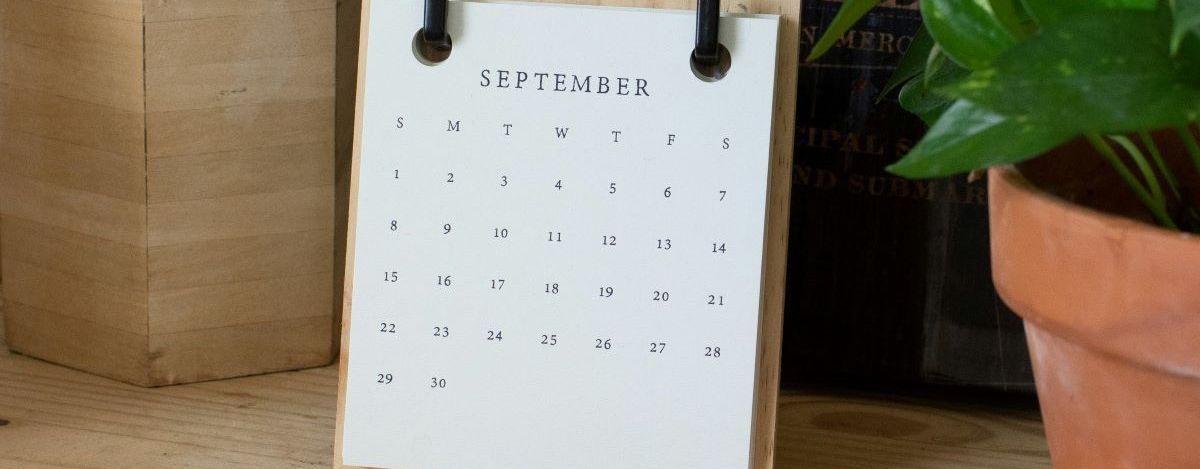How Long Does It Take to Refinance?
Written by:
Marianne Hayes
Marianne Hayes
Personal Finance Writer
Marianne Hayes is a contributing writer for Own Up. She has been covering personal finance and home ownership for over a decade.
See full bio
Fact Checked by:
Dan Silva
Dan is the Vice President of Marketplace Lending at Own Up. Throughout his career, he has held executive leadership positions in the mortgage and banking industry.
See full bio

Refinancing your home can be a strategic way to reduce your monthly payments, tap into home equity, and secure a lower interest rate – but how long does the process take from start to finish?
Closing on a new home loan typically takes 30 to 60 days. Let’s take a look at the refinancing journey, including average time frames and factors that could speed up or delay the process, and unpack practical tips to help you navigate each phase with confidence.
7 Stages of the Refinance Process
Refinancing involves taking out a new mortgage and using it to pay off your existing loan. You may do this to change the terms of your loan, modify your monthly payment, or access cash that’s tied up in home equity. Every mortgage lender is different, but the refinance process typically involves the following steps:
1. Finding a Lender
If you’re happy with your original lender, you may choose to refinance with them – assuming the rates and terms fit your financial situation. It’s always wise to shop around and compare refinancing options, looking at interest rates, terms, and fees. Choosing the wrong lender could result in a longer-than-usual refinance process and might cost you more money in the long run.
2. Deciding on a Refinance Loan
Another step when refinancing is deciding the type of loan you want to take out. There are two main loan options:
- Rate-and-term refinance: This type of loan is ideal if you hope to change your monthly mortgage payment or the repayment term on your existing mortgage. Rate-and-term refinancing can also allow you to switch from an adjustable-rate mortgage to a fixed-rate mortgage or from a government-insured loan to a conventional loan. In some situations, a rate-and-term refinance may allow you to drop your mortgage insurance.
- Cash-out refinance: If you have equity in your home, you could use a cash-out refinance loan to convert it to cash. With this type of transaction, your new loan has a higher balance than your previous one, but you receive the difference as a cash payment.
If you come into a cash windfall, another option is to put a lump sum toward your new mortgage, resulting in a smaller balance and lower monthly payment.
3. Completing a Loan Application
Once you decide on the right lender, the next step is to complete a new loan application. Remember that refinancing involves taking out an entirely new mortgage. That means you have to go through many of the same steps you took to get your original mortgage. The lender may check your credit, assess your debts, and verify your income and assets.
You also need to decide on the type of loan to apply for. If you refinance a government-backed mortgage – like an FHA, VA, or USDA loan –the application process may be less time-consuming, especially if you maintain the same loan type. In these types of situations, qualifying borrowers may not have to meet such rigorous credit requirements. This type of refinancing is commonly known as a streamline refinance.
4. Gathering Your Documents
In most cases, be prepared to provide the following mortgage application documents:
- Government-issued photo ID
- W-2 forms
- Income tax returns
- Pay stubs
- Bank statements
- Investment account statements
- A letter of explanation for any unique financial challenges
- A gift letter if part of your down payment is a financial gift from someone else
You can also expect a hard credit inquiry.
5. Completing a Home Appraisal
When refinancing, you need to complete the home appraisal process again. This allows the lender to determine the current market value of your home and ensure that your new mortgage loan amount doesn’t exceed that number. If your home appraisal comes in lower than you expect, it could result in a smaller refinance loan. Your property value is also important if you seek a cash-out refinance because it directly affects your equity.
6. Going Through Underwriting
At this point in the journey, your refinance loan application then goes through the underwriting process. This is essentially a risk assessment where the lender ultimately decides whether or not to approve your new home loan (and under what terms). Your loan officer and real estate agent can help streamline this process by providing underwriters with the necessary information and communicating any of their questions back to you.
7. Closing on Your New Mortgage
If all goes well, you arrive at the closing table ready to finalize the deal. This involves signing all the required paperwork and providing any outstanding payments, such as closing costs. In 2021, the national average closing costs for a single-family property refinance was less than 1% of the average refinance loan amount, according to a report by ClosingCorp.
Factors That Could Affect How Long it Takes to Refinance
The following factors could throw a wrench in your refinancing timeline:
The Borrower’s Credit Score
Having a less-than-perfect credit report could suggest to lenders that you’re a risky borrower, which may affect your home loan terms and eligibility. You likely need a credit score that’s over 620 to qualify for a refinance loan. Your debt-to-income ratio and credit history both factor into your credit score.
Complex Financial Situations
All kinds of financial setbacks can delay a refinance application, including a previous bankruptcy, a stretch of unemployment, or excessive medical bills. The lender may look closely at these things during underwriting.
Lender Workload
If your lender is busy processing other mortgages and refinance loans, your application may not be a top priority.
The Type of Loan
Again, if you refinance an FHA loan, VA loan, or USDA loan and you maintain the same loan type, the process could be much faster.
Setting the Stage for a Smooth Refinancing Experience
These simple tips may help homeowners enjoy a quicker refinance process:
Have Your Documentation Ready
Gather all the necessary paperwork before approaching a lender.
Maintain a Good Credit Score
Bad credit could stand in your way of refinancing. Paying each credit card bill on time and keeping your credit usage low can help improve your credit.
Choose the Right Lender
This can help the refinancing process to move as swiftly as possible. Choose a lender that has good reviews, and consider referrals from friends, family members, or neighbors.
Is Refinancing Worth It?
Refinancing may be wise if you can:
- Reduce your interest rate by at least 0.25%.
- Lower your monthly payments.
- Shorten your loan term and total payment.
- Drop your mortgage insurance.
How Do Costs Impact the Financial Benefit of Refinancing?
Current mortgage rates can affect your decision to refinance in addition to the timing. If you currently have a 3.15% fixed-rate mortgage, refinancing to 7% probably isn’t the best financial move.
You may also want to consider closing costs. When you put all of these elements together, do the numbers make sense to refinance? Let your financial situation and long-term goals be your guide.
A refinancing calculator can help to paint a picture of the costs associated with refinancing your home.
Common Delays and How to Avoid Them
Below are common roadblocks in the refinancing process:
Appraisal Issues
If your home has any major issues, like a damaged roof or other obvious flaws, consider making repairs before refinancing. Otherwise, you may end up with a lower appraisal.
Incomplete Documentation
Double-check your loan documents to ensure you have everything you need. Overlooking something could delay your loan application.
Title Problems
If there are any new judgements, liens, or title issues on your property, those things could come up during the refinance process and slow things down. Be sure to resolve any problems beforehand.
Some Important Things to Consider
Here are a few other important things to keep in mind when refinancing:
How Refinancing Affects Your Home Equity
If you can secure a lower interest rate, your payments going forward could chip away at your principal balance faster. This can help increase your home equity at a quicker rate. On the flip side, a cash-out refinance may reduce your home equity. Think about your long-term financial goals when deciding how refinancing could affect your home equity.
The Terms of Your New Mortgage
Taking out a new mortgage is a huge financial decision. Make sure you understand the loan terms, monthly payments, fees, and potential savings before moving ahead. If you have questions, ask your loan officer or real estate agent.
The Bottom Line
A mortgage refinance could be a great way to save money in the long term, and it typically takes about a month to a month-and-a-half to complete. But delays could stretch out that timeline and create stress in the interim. Having awareness of your refinance options is a good place to start.


